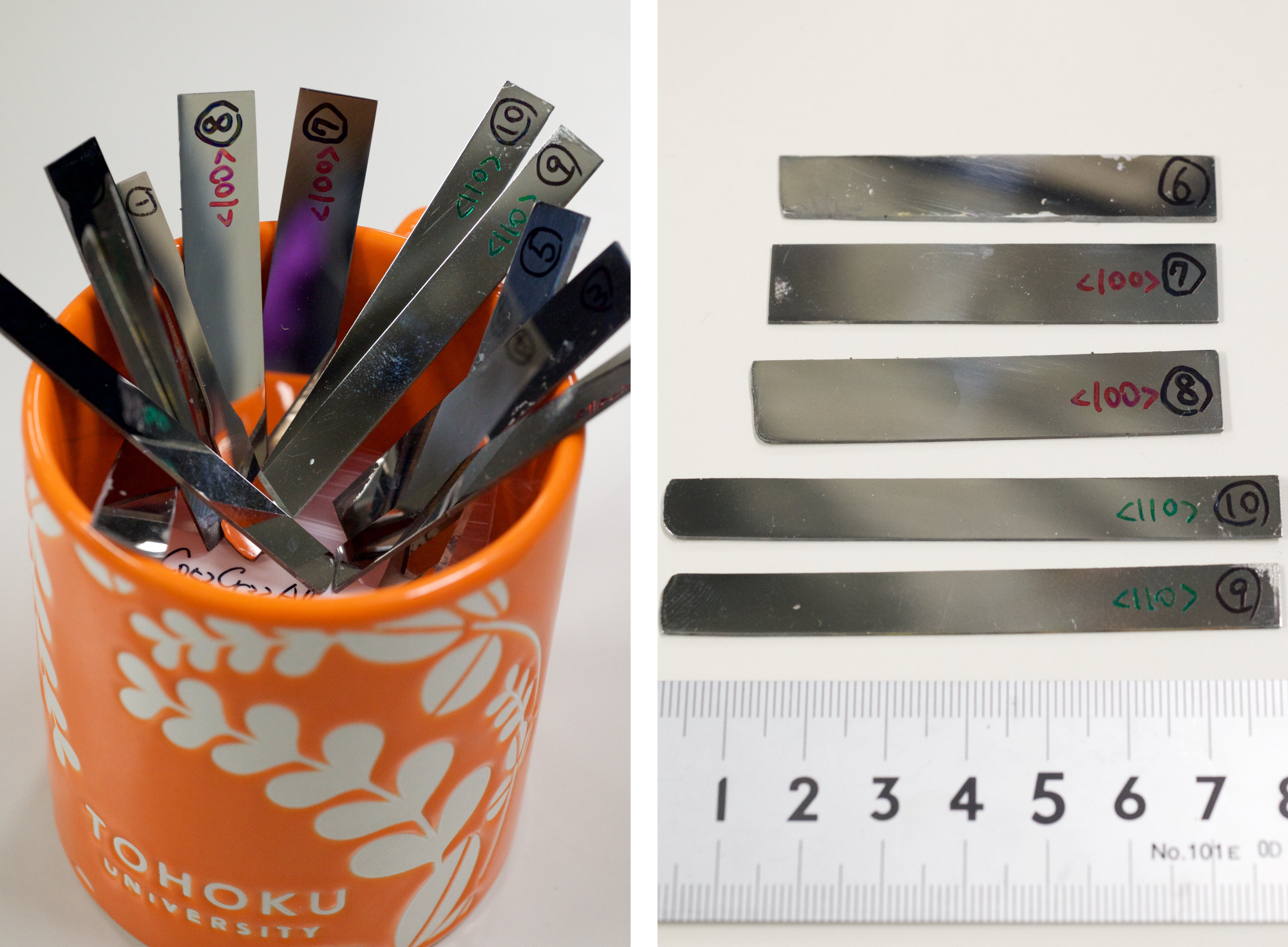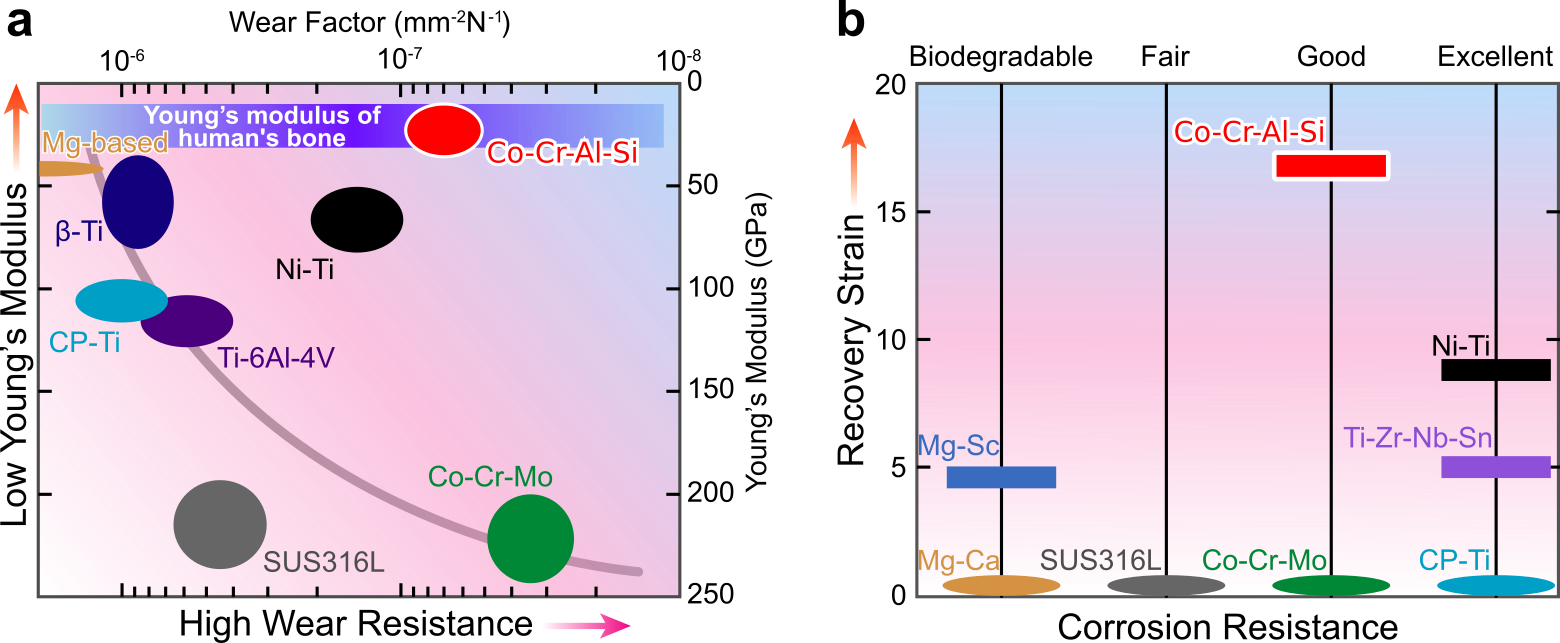 Novel CoCr-based superelastic metallic biomaterial with low Young's modulus
Novel CoCr-based superelastic metallic biomaterial with low Young's modulus
- Features and Uniqueness
-
General metallic biomaterials, such as stainless steels and conventional CoCr alloys, show a high Young's modulus ten times higher than that of human bones. This is an unfavored feature because it causes the so-called "stress shielding effect" when they are used as implants. β-type Ti alloys have a relatively lower Young's modulus, but they come with a compromise of low wear resistance. The current novel CoCr-based alloys are a breakthrough; they exhibit both a low Young's modulus similar to human bones and a high wear and corrosion resistance. Moreover, they exhibit superelasticity with a huge recoverable strain over 17%, also showing promise as shape memory alloys.
- Practical Application
-
It is the first time that a low Young's modulus, a high corrosion and wear resistance, and a superior superelastic behavior are simultaneously obtained in a single material. The current novel CoCr-based alloys are promising for biomedical applications such as total hip or knee joint replacements, bone plates, spinal fixation devices, and vascular stents.
- Keywords


 Medical
Medical
 Life Sciences
Life Sciences
 Information Communication
Information Communication
 Environment
Environment
 Energy
Energy
 Manufacturing Technology
Manufacturing Technology
 Social Infrastructure
Social Infrastructure
 Frontier
Frontier
 Human and social sciences
Human and social sciences



